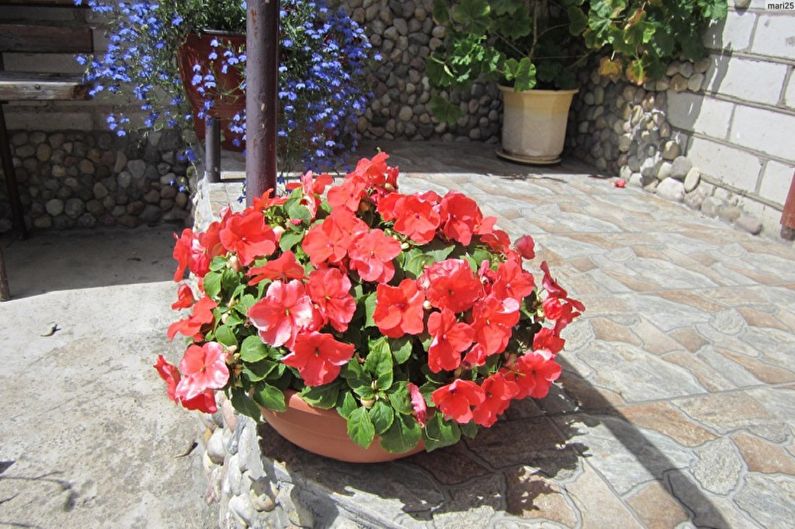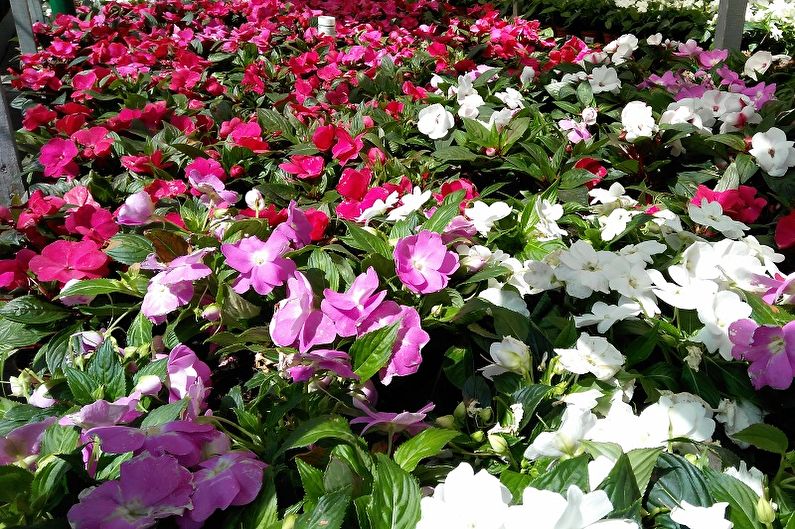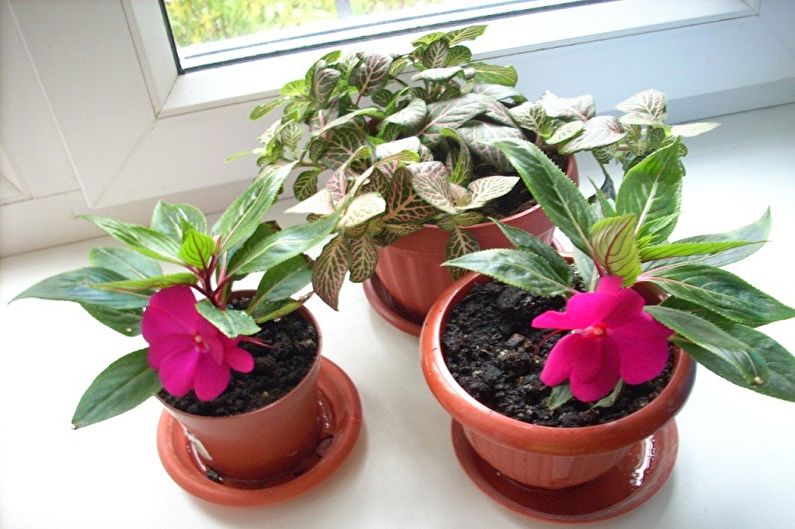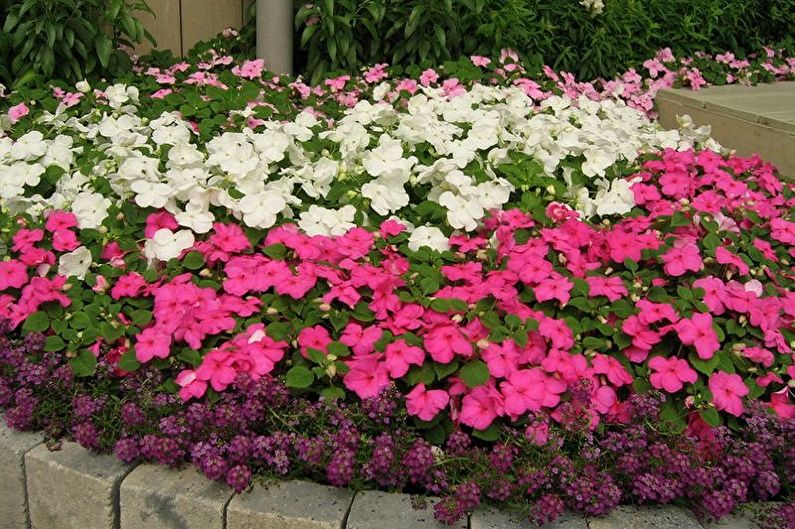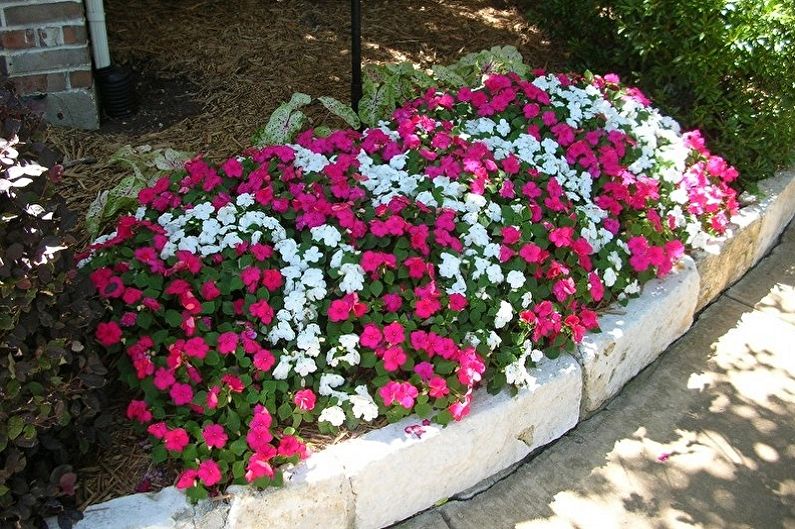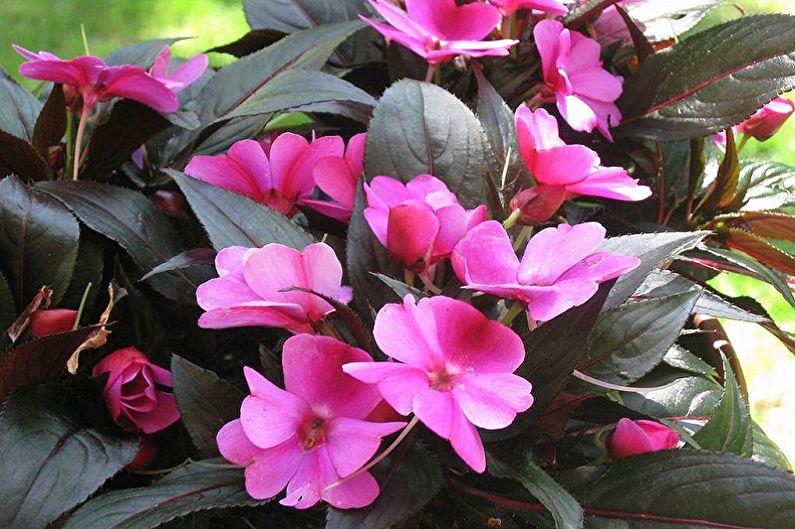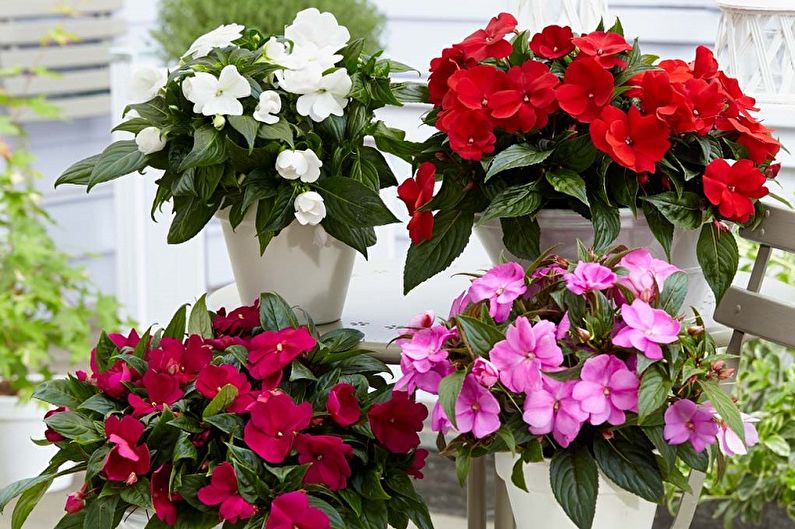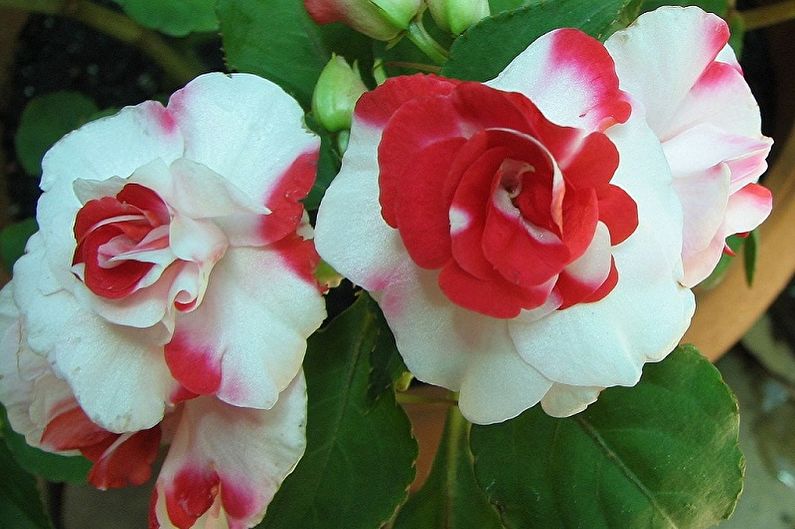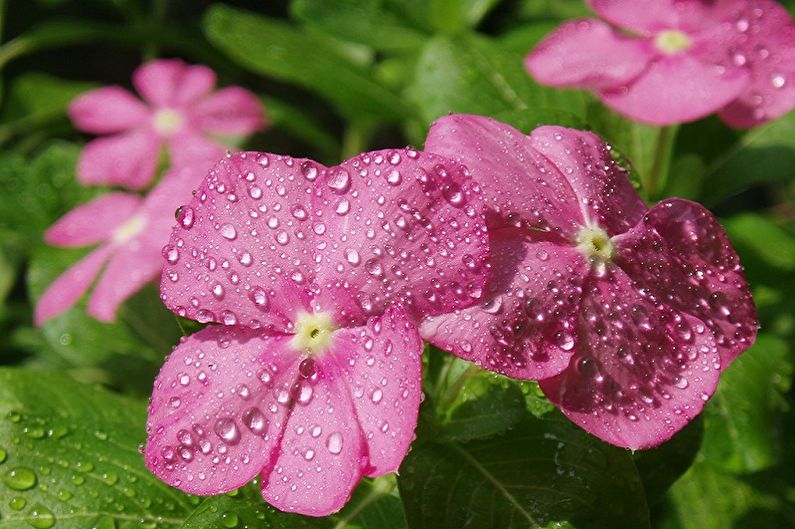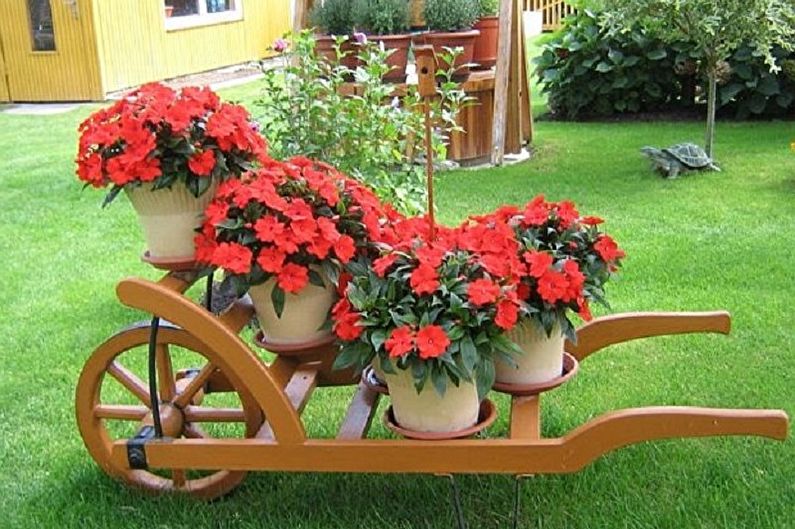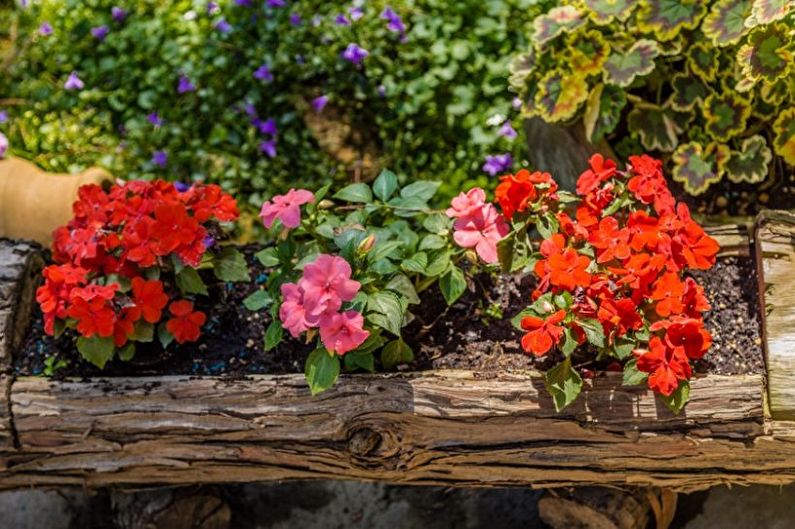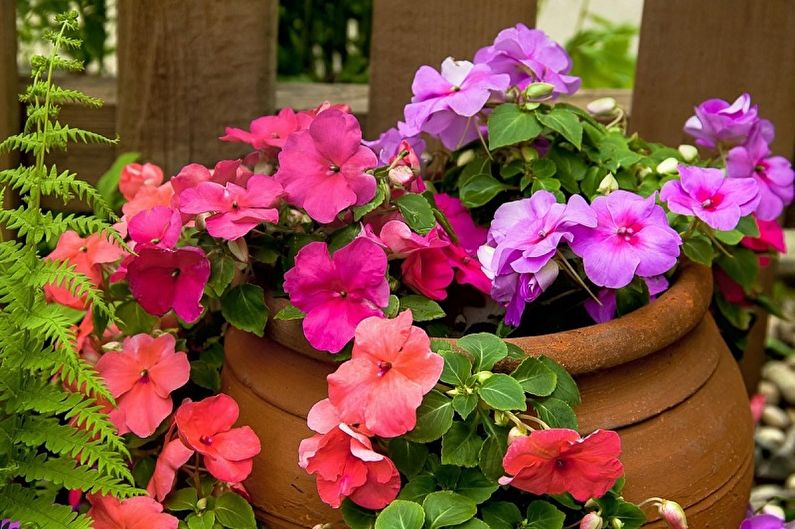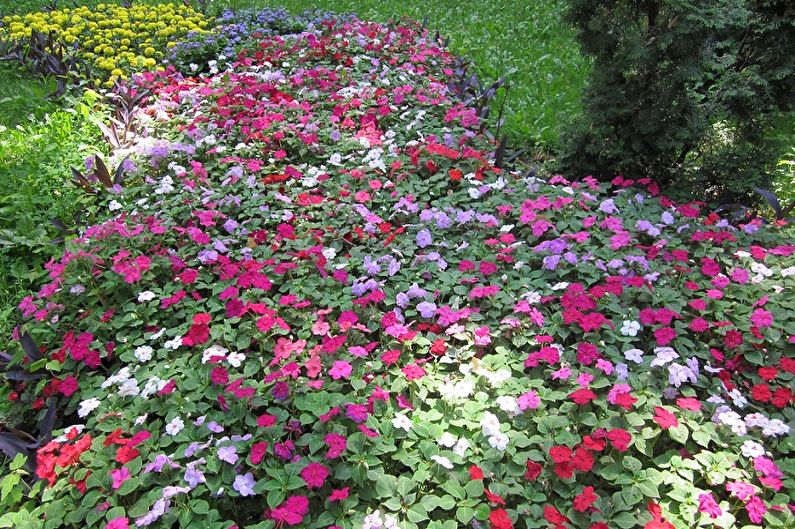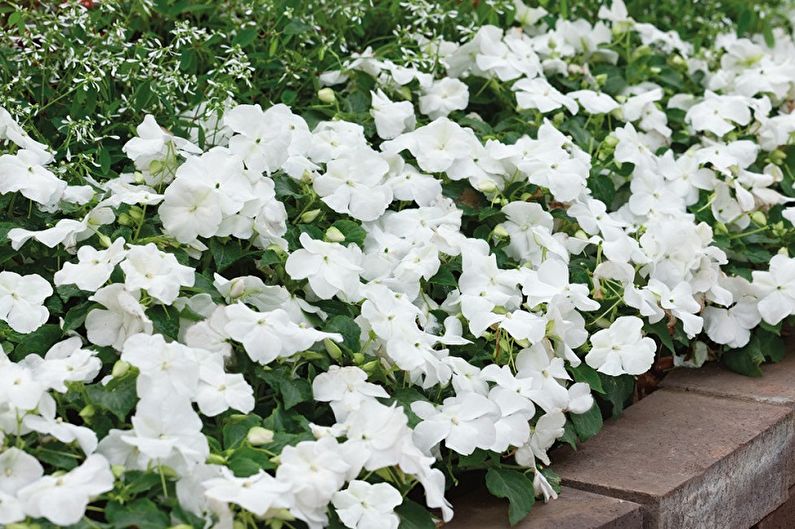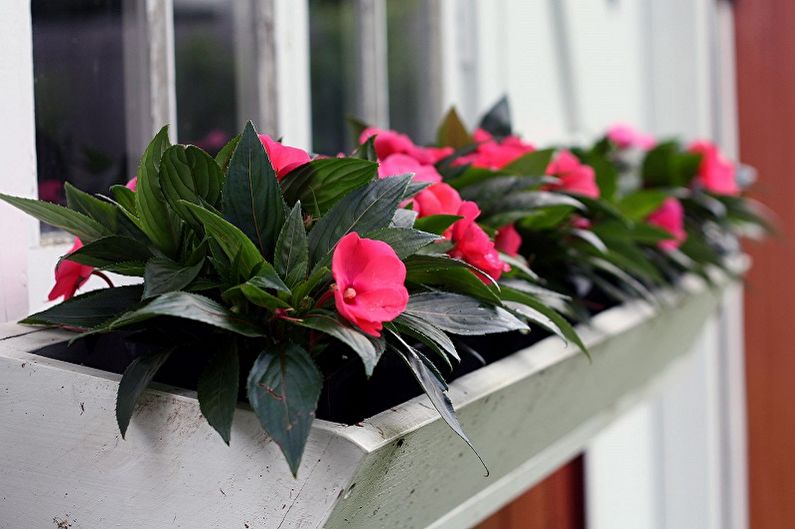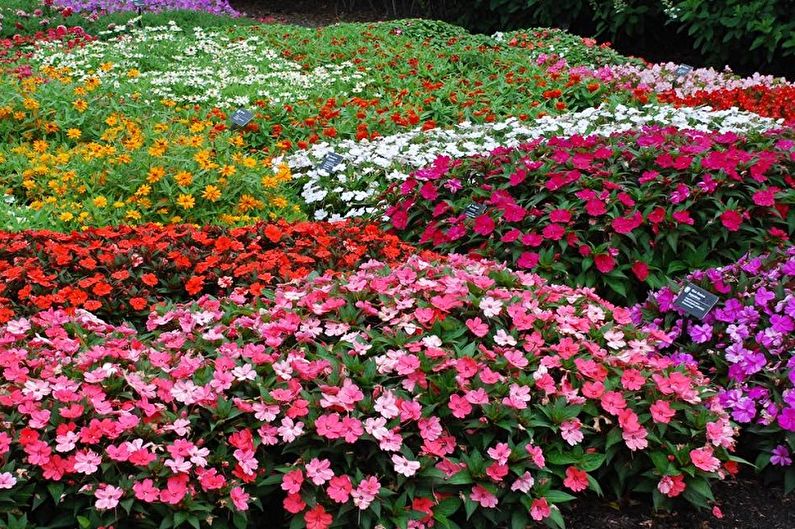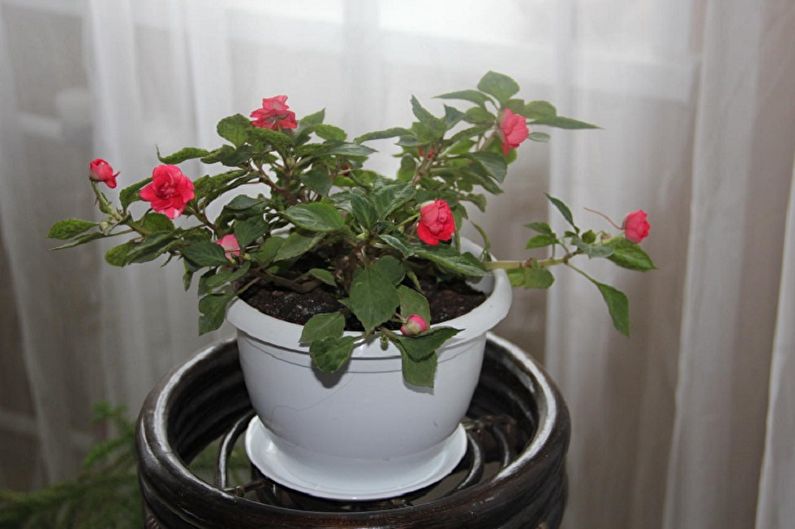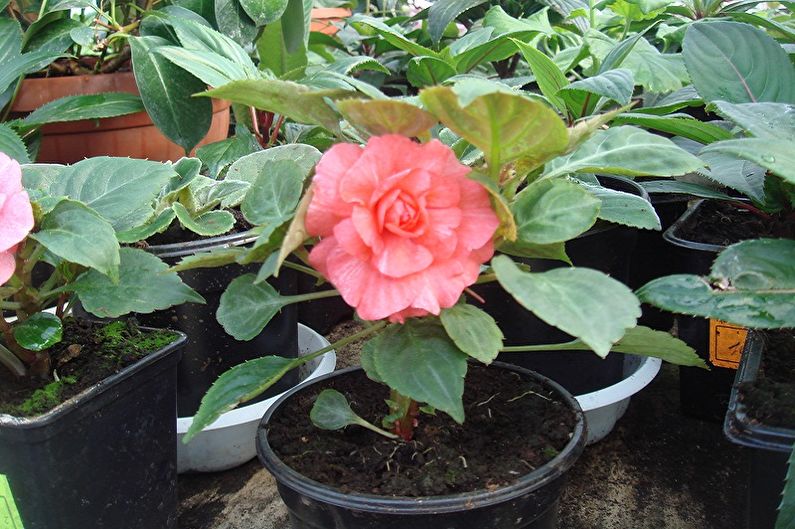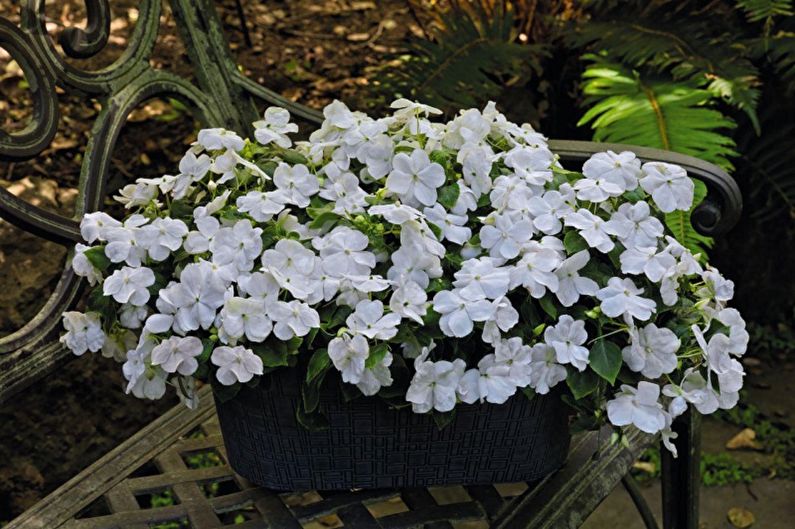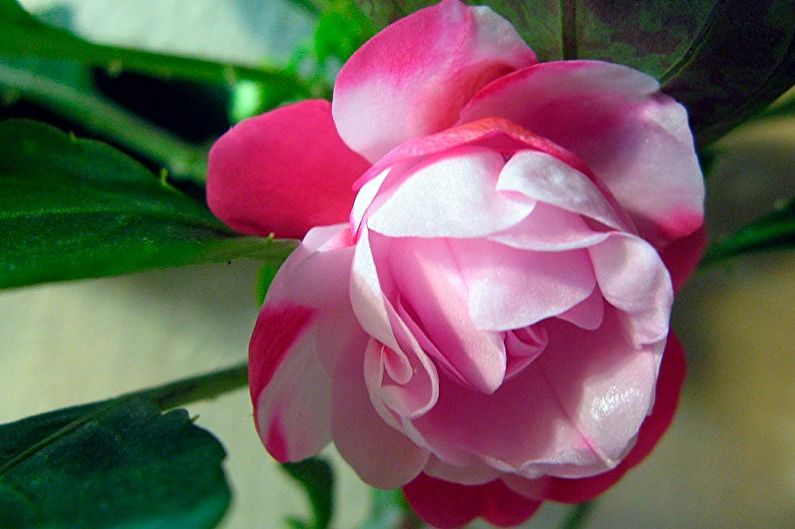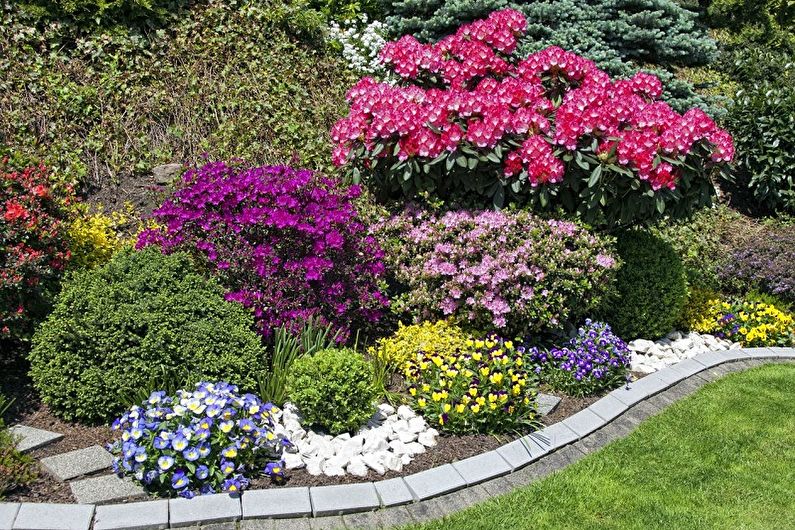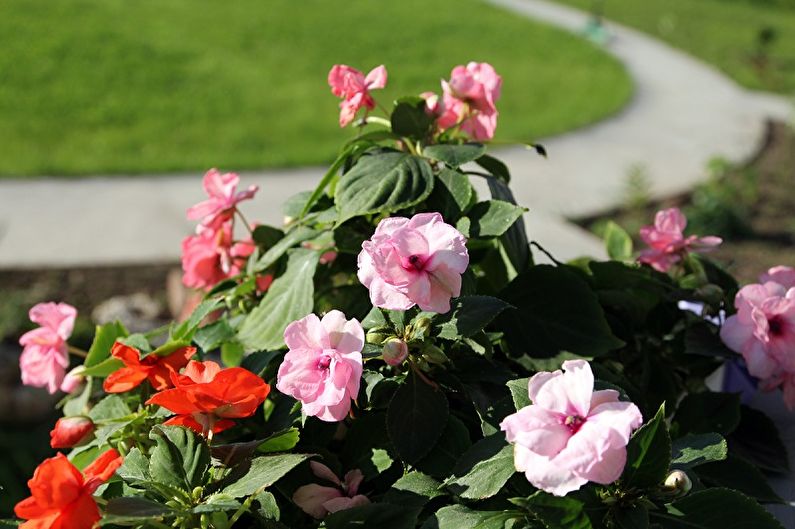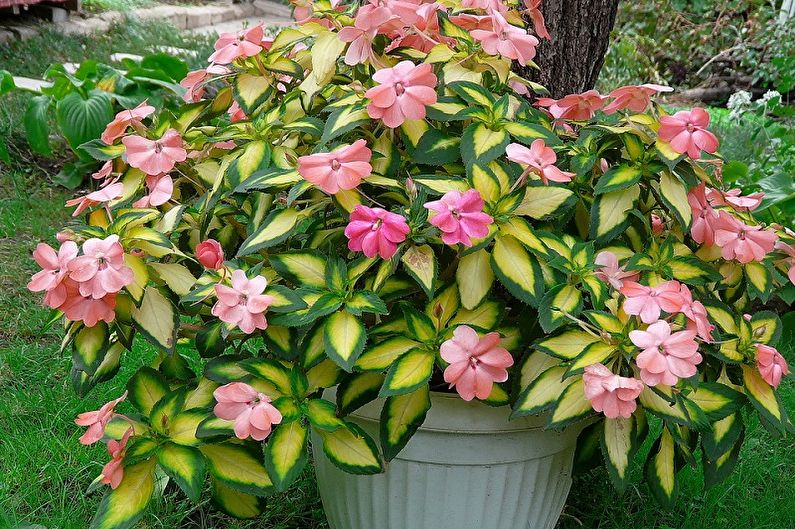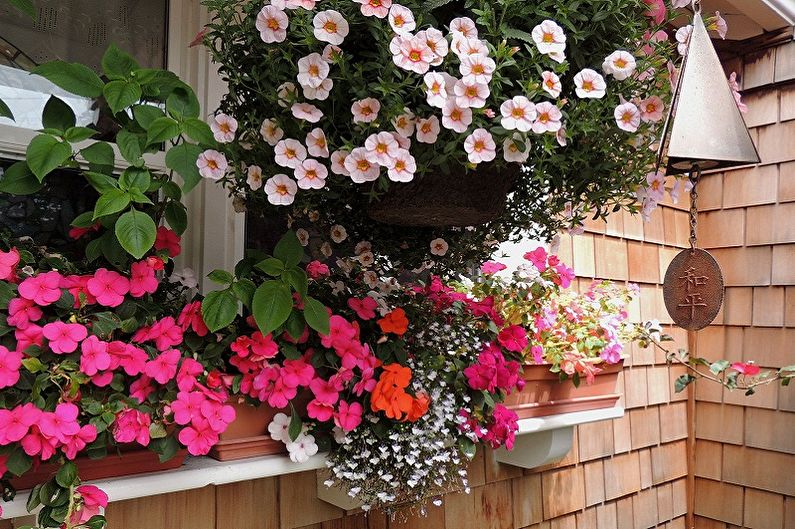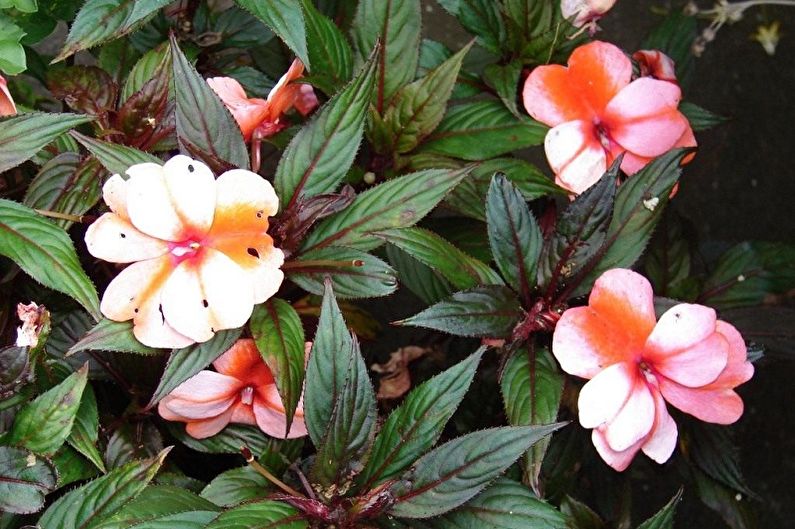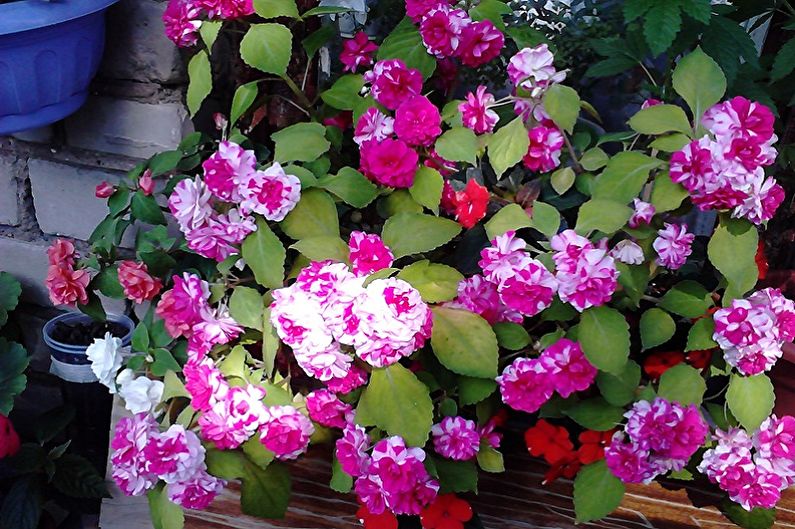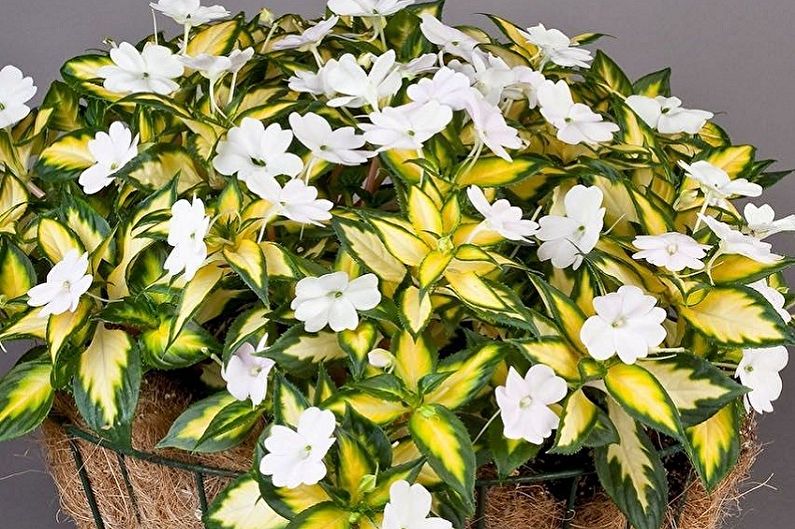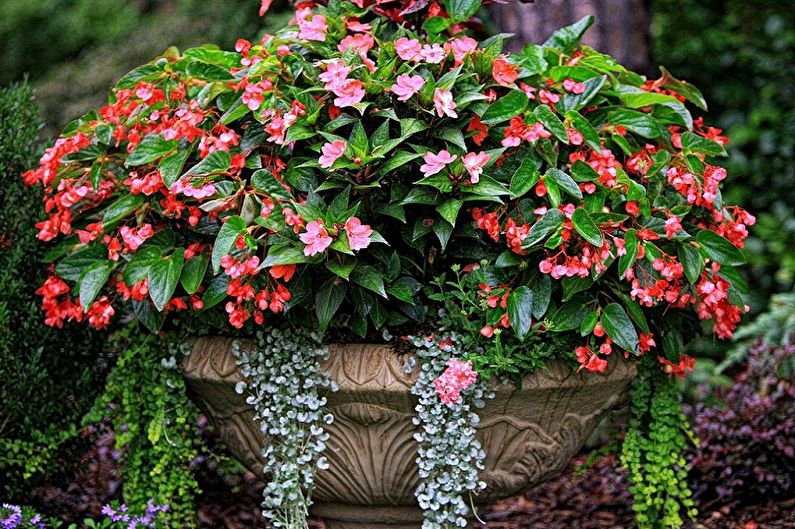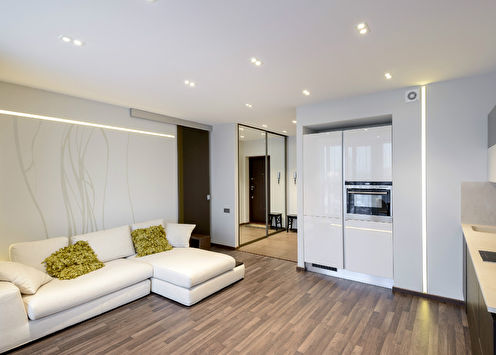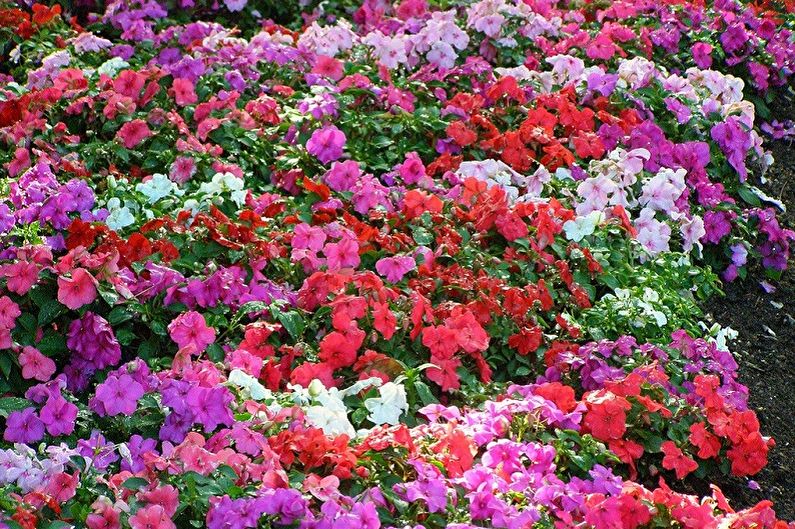
Balsam, aka touchy, came to us from the tropics and subtropics. In the natural environment, it grows in Africa and Asia, but the island of Zanzibar is most famous for it. He was nicknamed "Roly wet." This is due to the fact that spots of thick, sugary liquid protrude at the edges of the leaves. “Touchy” is due to the property of its ripe boxes to throw out seeds even when accidentally touched. Balsam is actively growing in apartments, it is used to decorate the interiors of houses, for landscaping terraces and balconies, and for composing holiday bouquets.
General characteristics
Balsam is a herbaceous perennial, less commonly an annual plant. Its shoots are straight, erect and juicy, leaves - bright, fleshy, jagged, oval or lanceolate, can be cast in bronze. Delicate flowers are hidden in deciduous sinuses and can be of any shade, from pink to blue or yellow. In combination with simple care and ease of propagation, this made balsam surprisingly popular among flower growers around the world.
Balsam was brought to Europe by the end of the 16th century, and it quickly gained its place in the hearts of landscapers. The period of intense flowering lasts from spring to late autumn. If conditions are in place, balsam can bloom even for a whole year.
Variegated and colorful balsam harmonizes well with various garden annuals.


Types of Balsam
In nature, there are hundreds of varieties and subspecies of the Balsamino genus. These are not only herbaceous varieties, but also shrubs. In apartments in mid-latitudes, several specific varieties and carefully selected breeding hybrids are used. They are brighter, more beautiful, more compact, bloom longer and more intensively.
Balsam waller
One of the most famous and popular species. It is low, up to 20, and a maximum of up to 50 cm, bushy, spherical in shape. Bright leaves - a wide oval. They can be not only green, but also reddish or brownish. Single flowers are bright but small. In some varieties, they are collected in small asymmetric inflorescences on high pedicels. It is on the basis of Waller that the main types of hybrids are developed, which are now common in culture and economy.
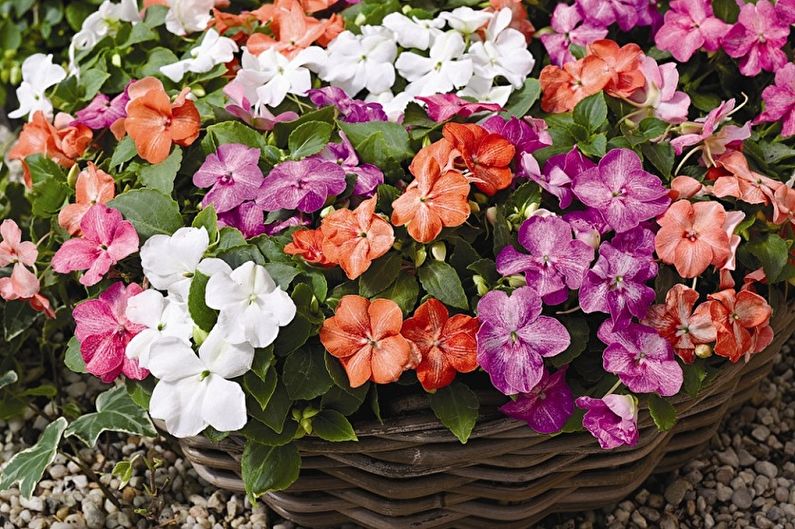
Balsam garden
One-year-old upright medium-sized balsam grows to 70 cm. Its smooth stems are actively branching, but they are easy to break at the levels of nodes. Large pointed leaves look interesting because of their irregular shape. Garden varieties and flowers are also large. They can be ordinary and terry, and the range of shades varies from white to purple.
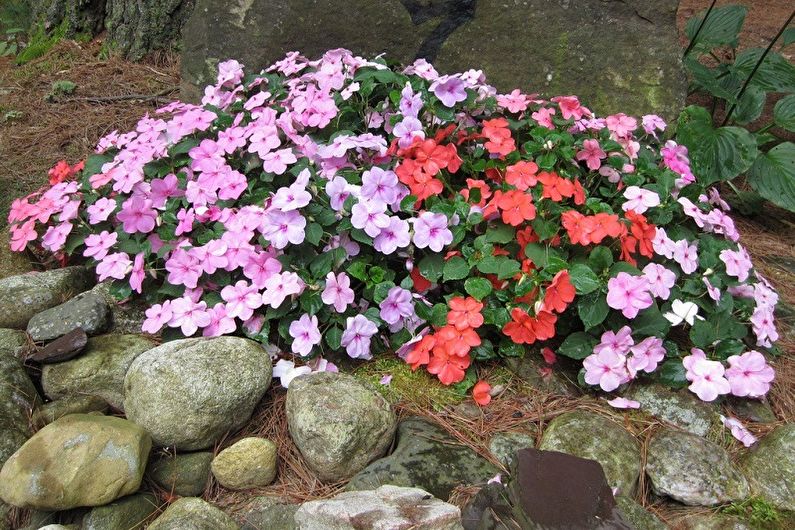
Balsam Balfur
This species is especially appreciated for its decorative qualities. It blooms intensely and abundantly. At the same time, small but bright flowers strew the whole bush. Balsam Balfur is a decorative garden species that actively bears fruit and propagates easily.
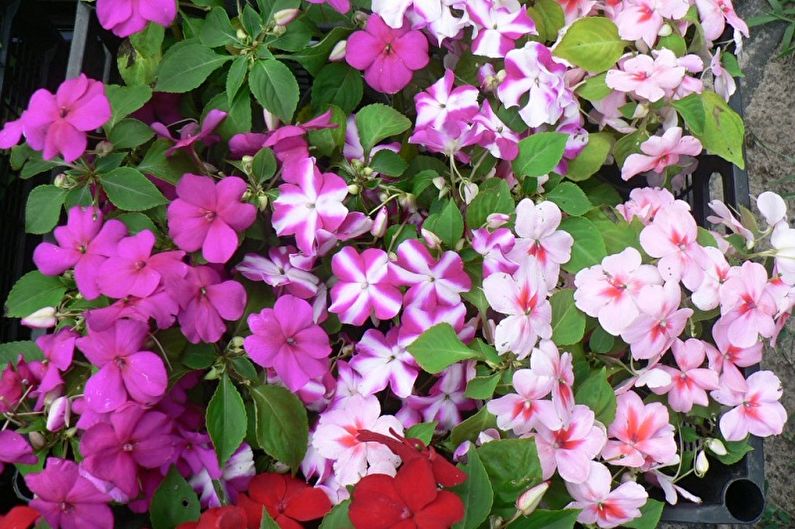
Common balsam
This is the most common balsam in nature, which grows in shaded streams and springs in the forests. The tall straight annual is distinguished by the unusual shape of a bright yellow flower: it is asymmetrical and as if drooping. An ordinary touchy forms continuous thickets. In traditional medicine, it is used as an anti-inflammatory component.
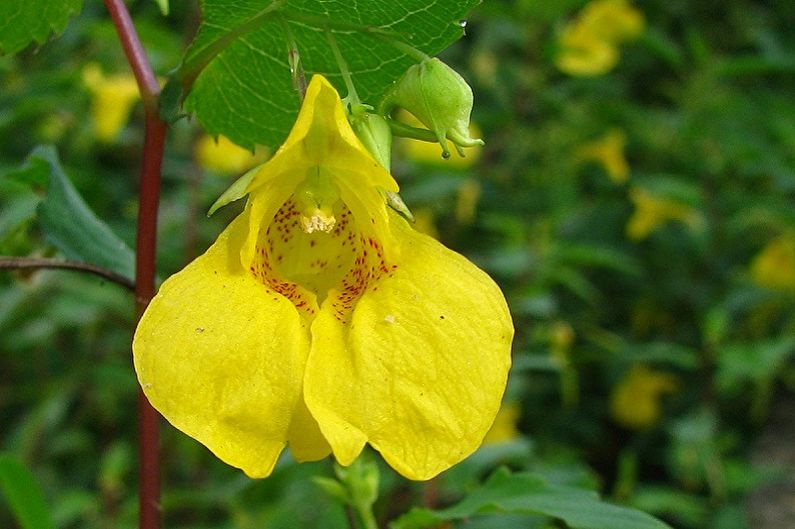
Creeping balsam
An interesting herbaceous variety came from wet Sri Lanka. It has two pronounced features: a reddish tint and long shoots that creep and quickly fill the space. Heart-shaped leaves also impress. Lonely growing flowers - small, bright sunny colors. Creeping balsam feels great in houses and apartments.
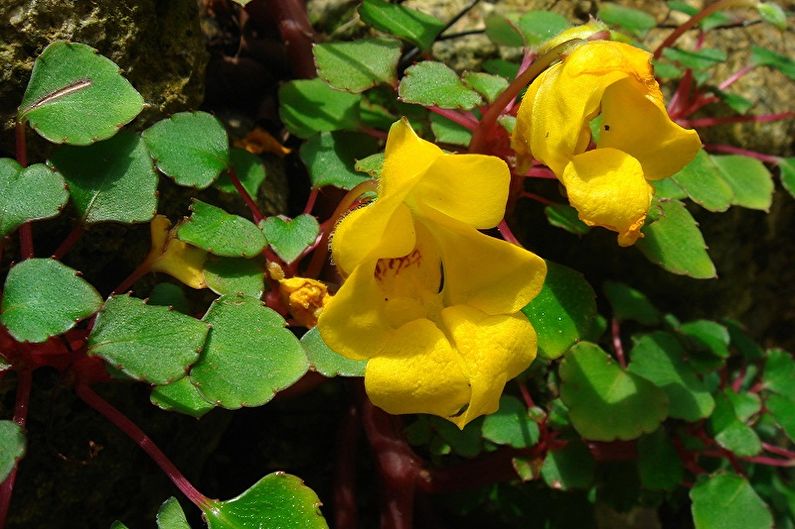
Small flowered balsam
Small-flowered differs from ordinary balsam in size. It is miniature and bright. By the rate of growth and reproduction, it is more an aggressive weed than decorative seedlings. In addition to the usual colors, he also has small clematogamous, much less demanding of external conditions.
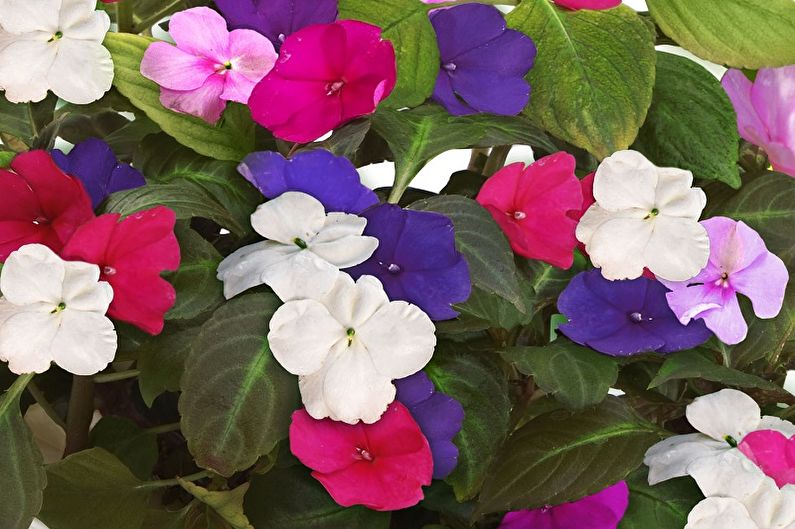
Iron-bearing balsam
One-year-old high two-meter balsam with branched knotty stems. Large leaves grow to 15 cm and are collected in sockets in a few pieces. The name of the species came from their form: at the base there are two noticeable pieces of iron. Inflorescences umbrellas are collected from large simple flowers. This is a garden variety that blooms by the middle of summer and pleases to a noticeable frost.
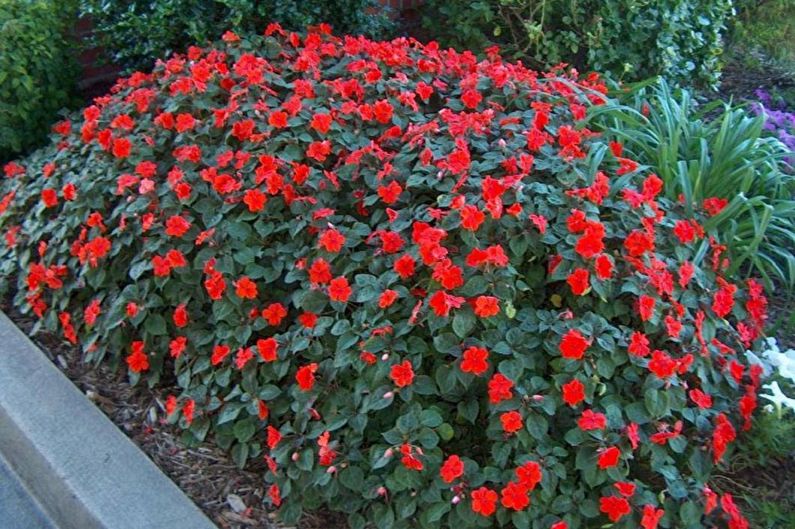
New Guinea Balsam
This is an extensive category of Hawker balsamic hybrids. Basically, these are tall bushy perennials, but miniature varieties are also found. Such balsam was specially bred as decorative. Colorful flowers delight almost the whole year, while they are larger than traditional species. Leaves are multicolor, fleshy, also very decorative. New Guinean hybrids fit perfectly into the terraces and adorn the calm, sunlit gardens.
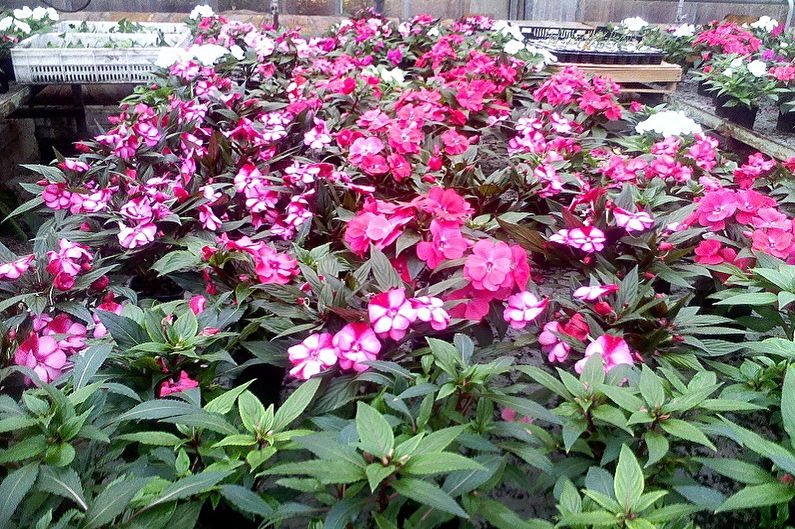
Balsam Care
Homemade balsam is truly versatile and undemanding. He loves the sun and light, but not overheating. Feel free to leave it on the windowsill, but do not forget about protection from direct sunlight at the peak of the hot season. An ideal place in the garden is light partial shade under the trees.
A perennial plant tolerates winter, but you need to take care of it correctly: maintain the temperature above +15 and reduce watering. The optimum summer temperature is +20 ... + 22C. The minimum limit for life is + 13C. In the summer, bring home flowerpots to fresh air so that they breathe. They can even be transplanted into the open ground until the season ends.
Ideal soil is moderately loose and light. In soft soils, the flower cannot be firmly rooted. Food is moderate. An excess of fertilizing leads to the fact that the leaves begin to grow intensively at the expense of flowering. Of the additives used turf, compost, humus, expanded clay or perlite.
In the heat, constantly moisten the ground. At a temperature of + 20 °, spray balsam a couple of times a day, but do not water the flowers themselves. To prevent the root from rotting, immediately drain excess water from the sump.
Water for irrigation is ideally settled and necessarily soft. Too hard leads to an increase in alkalinity of the soil. A plaque appears on top, and the plant is sick.
Gently loosen the soil periodically to ensure oxygen access. Complex fertilizers are applied from spring about 2 times a month. Introduce phosphorus and potassium during flowering. At the end of August, finish adding supplements. After transplanting, the first feeding is at least 3 weeks later.
In the spring, be sure to cut off the overgrown balsam by about half. The tops of long healthy shoots can be pinched to develop new ones. Periodically remove weak, painful and improperly growing branches throughout the season.
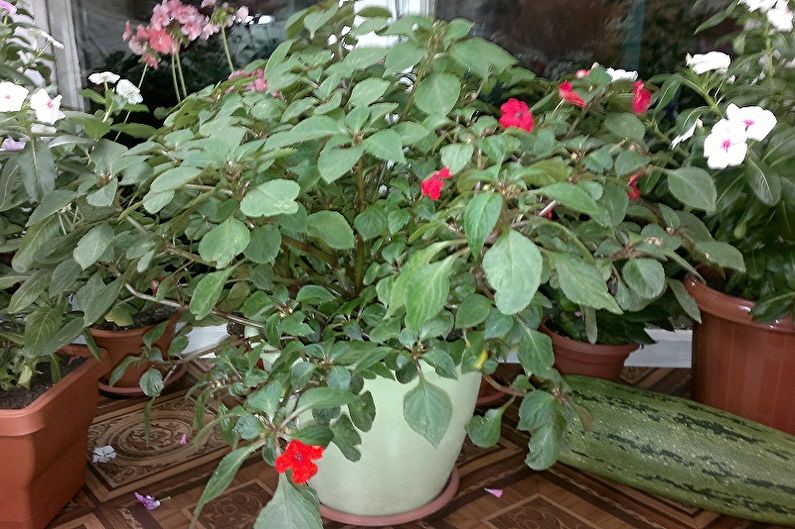
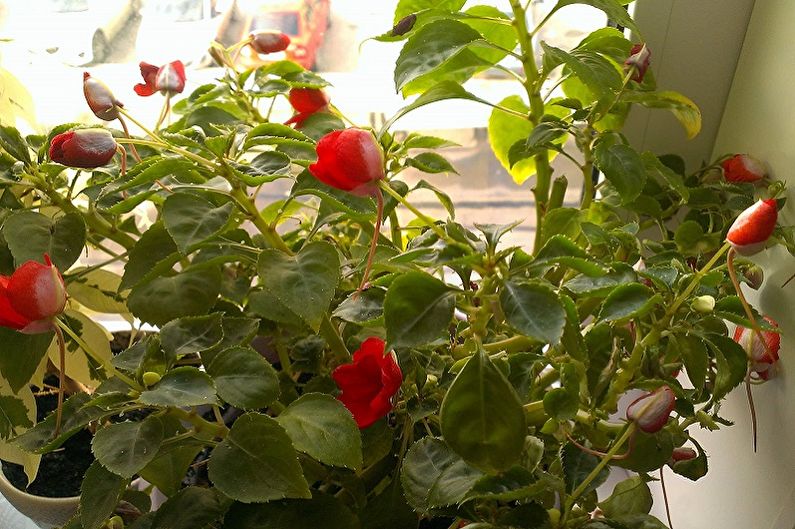
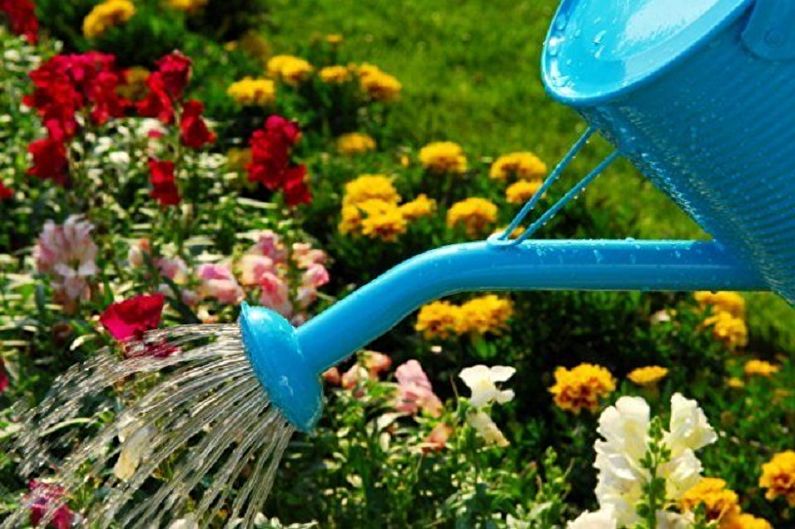
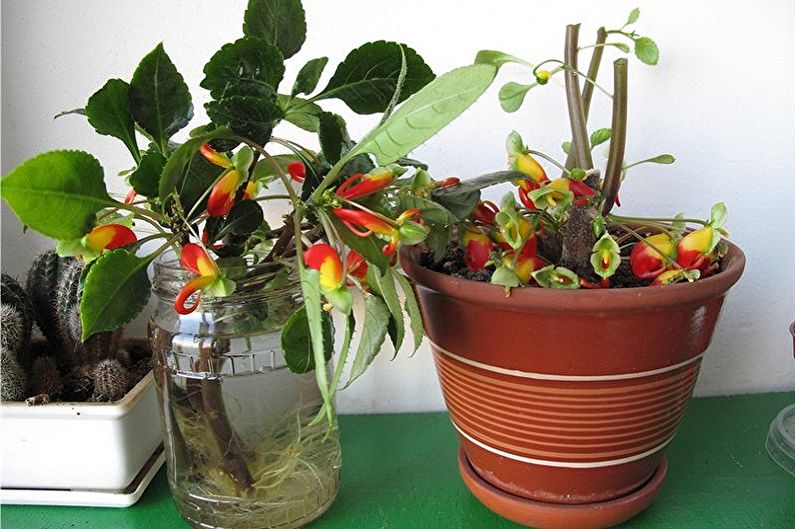
Transplantation and reproduction
It is better to buy immediately prepared healthy seedlings in pots. Balsam seeds are hardly grown at home from seeds. This is a long time, and for some varieties it is also problematic to preserve species features. When buying, you can even find flowers with buds, thus determining in advance the shade of flowering.
The plant needs regular transplantation due to intensive growth. A tight pot is a common cause of leaf fall, and in a large and large one all resources go to the development of the root system, which is why the ground part almost does not grow and does not bloom.
For propagation, the cuttings are used. Cut off healthy shoots in early autumn, then immediately immerse them in a moist substrate or just in water until they take root. After that - a pick. The further procedure is simple: in winter - keep warm, and in spring - planted in a permanent place.
If you still wanted to start planting seeds, you need to sow them in early spring. A greenhouse effect is created for the boxes. After a season, seedlings can be transplanted. So that by May, the balsam has bloomed, seedlings will have to deal with since mid-winter.
Balsam is transplanted in spring or summer. It is advisable that he be cramped in a new pot - then he blooms most intensively. When transplanting, also prune to stimulate the growth of new shoots. Young plants are transplanted and transplanted annually. For three-year-olds and older, it is sufficient to periodically update them due to the rooting of apical cuttings.
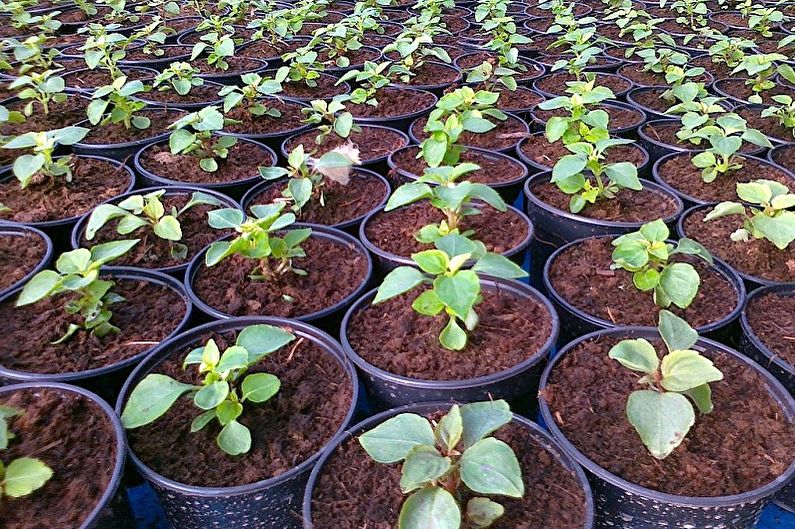
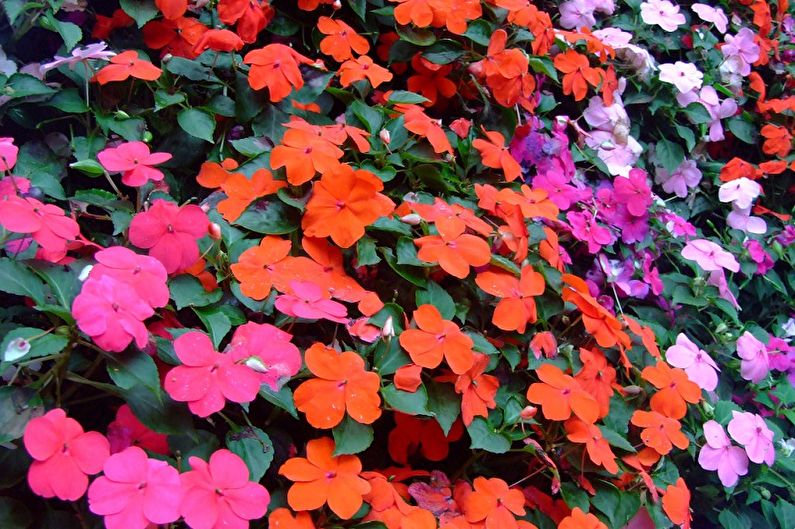
Pest and Disease Control
The main problems are aphids, whiteflies and spider mites. This is a common misfortune of both garden and home balsam. Also remember that with the wrong temperature and humidity all kinds of fungal lesions develop.
If the leaves fall off the touch, most likely the flower does not have enough heat and systematic care. If the plant withers - pay attention to the frequency of watering. Weak flowering indicates improper feeding or soil. Due to the lack of light, balsam almost does not bloom, but it is intensively stretched.
Balsam is afraid of drafts. Also, it does not tolerate acidic soil. Because of it, bacteriosis develops. If black spots appear, treat the soil with antibiotics.
An interesting feature of the untouched is also that varieties with dark flowers are more tenacious and unpretentious than with light ones.
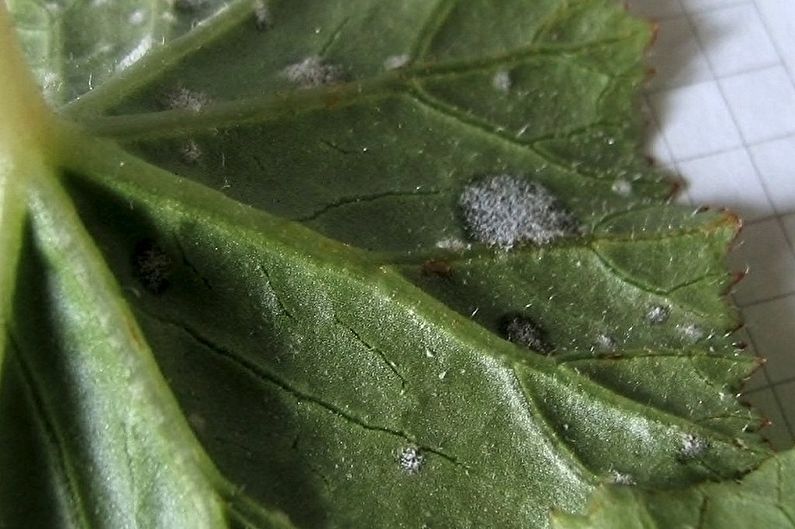

Balsamin - photo
So they did not decide where to plant balsam so that it would grow up healthy and delight in beauty? Especially for you, we have put together a selection of photos with interesting and creative ideas for inspiration.
